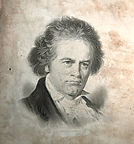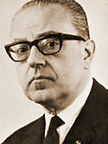Barbara Nissman
"...one of the last pianists in the grand romantic tradition of Liszt, Rachmaninoff, and Rubinstein"
Barbara Nissman
"...one of the last pianists in the grand romantic tradition of Liszt, Rachmaninoff, and Rubinstein"
Barbara Nissman
"...one of the last pianists in the grand romantic tradition of Liszt, Rachmaninoff, and Rubinstein"
Barbara Nissman
"...one of the last pianists in the grand romantic tradition of Liszt, Rachmaninoff, and Rubinstein"
Barbara Nissman
"...one of the last pianists in the grand romantic tradition of Liszt, Rachmaninoff, and Rubinstein"
Barbara Nissman
"...one of the last pianists in the grand romantic tradition of Liszt, Rachmaninoff, and Rubinstein"
Barbara Nissman
"...one of the last pianists in the grand romantic tradition of Liszt, Rachmaninoff, and Rubinstein"
Barbara Nissman
"...one of the last pianists in the grand romantic tradition of Liszt, Rachmaninoff, and Rubinstein"
Barbara Nissman
"...one of the last pianists in the grand romantic tradition of Liszt, Rachmaninoff, and Rubinstein"
Barbara Nissman
"...one of the last pianists in the grand romantic tradition of Liszt, Rachmaninoff, and Rubinstein"
Barbara Nissman
"...one of the last pianists in the grand romantic tradition of Liszt, Rachmaninoff, and Rubinstein"
Barbara Nissman
"...one of the last pianists in the grand romantic tradition of Liszt, Rachmaninoff, and Rubinstein"
Barbara Nissman
"...one of the last pianists in the grand romantic tradition of Liszt, Rachmaninoff, and Rubinstein"
Barbara Nissman
"...one of the last pianists in the grand romantic tradition of Liszt, Rachmaninoff, and Rubinstein"
Barbara Nissman
"...one of the last pianists in the grand romantic tradition of Liszt, Rachmaninoff, and Rubinstein"
Barbara Nissman
"...one of the last pianists in the grand romantic tradition of Liszt, Rachmaninoff, and Rubinstein"
Barbara Nissman
"...one of the last pianists in the grand romantic tradition of Liszt, Rachmaninoff, and Rubinstein"
Barbara Nissman
"...one of the last pianists in the grand romantic tradition of Liszt, Rachmaninoff, and Rubinstein"
Barbara Nissman
"...one of the last pianists in the grand romantic tradition of Liszt, Rachmaninoff, and Rubinstein"
Barbara Nissman
"...one of the last pianists in the grand romantic tradition of Liszt, Rachmaninoff, and Rubinstein"
Barbara Nissman
"...one of the last pianists in the grand romantic tradition of Liszt, Rachmaninoff, and Rubinstein"
Barbara Nissman
"...one of the last pianists in the grand romantic tradition of Liszt, Rachmaninoff, and Rubinstein"
Barbara Nissman
"...one of the last pianists in the grand romantic tradition of Liszt, Rachmaninoff, and Rubinstein"
Barbara Nissman
"...one of the last pianists in the grand romantic tradition of Liszt, Rachmaninoff, and Rubinstein"
Barbara Nissman
"...one of the last pianists in the grand romantic tradition of Liszt, Rachmaninoff, and Rubinstein"
Barbara Nissman
"...one of the last pianists in the grand romantic tradition of Liszt, Rachmaninoff, and Rubinstein"
Barbara Nissman
"...one of the last pianists in the grand romantic tradition of Liszt, Rachmaninoff, and Rubinstein"
Barbara Nissman
"...one of the last pianists in the grand romantic tradition of Liszt, Rachmaninoff, and Rubinstein"
Barbara Nissman
"...one of the last pianists in the grand romantic tradition of Liszt, Rachmaninoff, and Rubinstein"
Barbara Nissman
"...one of the last pianists in the grand romantic tradition of Liszt, Rachmaninoff, and Rubinstein"
Barbara Nissman
"...one of the last pianists in the grand romantic tradition of Liszt, Rachmaninoff, and Rubinstein"
Barbara Nissman
"...one of the last pianists in the grand romantic tradition of Liszt, Rachmaninoff, and Rubinstein"
Barbara Nissman
"...one of the last pianists in the grand romantic tradition of Liszt, Rachmaninoff, and Rubinstein"
Barbara Nissman
"...one of the last pianists in the grand romantic tradition of Liszt, Rachmaninoff, and Rubinstein"
Barbara Nissman
"...one of the last pianists in the grand romantic tradition of Liszt, Rachmaninoff, and Rubinstein"
Barbara Nissman
"...one of the last pianists in the grand romantic tradition of Liszt, Rachmaninoff, and Rubinstein"
Barbara Nissman
"...one of the last pianists in the grand romantic tradition of Liszt, Rachmaninoff, and Rubinstein"
Barbara Nissman
"...one of the last pianists in the grand romantic tradition of Liszt, Rachmaninoff, and Rubinstein"
Barbara Nissman
"...one of the last pianists in the grand romantic tradition of Liszt, Rachmaninoff, and Rubinstein"
Barbara Nissman
"...one of the last pianists in the grand romantic tradition of Liszt, Rachmaninoff, and Rubinstein"
Barbara Nissman
"...one of the last pianists in the grand romantic tradition of Liszt, Rachmaninoff, and Rubinstein"
Barbara Nissman
"...one of the last pianists in the grand romantic tradition of Liszt, Rachmaninoff, and Rubinstein"
Barbara Nissman
"...one of the last pianists in the grand romantic tradition of Liszt, Rachmaninoff, and Rubinstein"
Barbara Nissman
"...one of the last pianists in the grand romantic tradition of Liszt, Rachmaninoff, and Rubinstein"
Barbara Nissman
"...one of the last pianists in the grand romantic tradition of Liszt, Rachmaninoff, and Rubinstein"
Barbara Nissman
"...one of the last pianists in the grand romantic tradition of Liszt, Rachmaninoff, and Rubinstein"
Barbara Nissman
"...one of the last pianists in the grand romantic tradition of Liszt, Rachmaninoff, and Rubinstein"
Barbara Nissman
"...one of the last pianists in the grand romantic tradition of Liszt, Rachmaninoff, and Rubinstein"
Barbara Nissman
"...one of the last pianists in the grand romantic tradition of Liszt, Rachmaninoff, and Rubinstein"
Barbara Nissman
"...one of the last pianists in the grand romantic tradition of Liszt, Rachmaninoff, and Rubinstein"
Barbara Nissman
"...one of the last pianists in the grand romantic tradition of Liszt, Rachmaninoff, and Rubinstein"
Barbara Nissman
"...one of the last pianists in the grand romantic tradition of Liszt, Rachmaninoff, and Rubinstein"
Barbara Nissman
"...one of the last pianists in the grand romantic tradition of Liszt, Rachmaninoff, and Rubinstein"
Barbara Nissman
"...one of the last pianists in the grand romantic tradition of Liszt, Rachmaninoff, and Rubinstein"
Barbara Nissman
"...one of the last pianists in the grand romantic tradition of Liszt, Rachmaninoff, and Rubinstein"
Barbara Nissman
"...one of the last pianists in the grand romantic tradition of Liszt, Rachmaninoff, and Rubinstein"
Barbara Nissman
"...one of the last pianists in the grand romantic tradition of Liszt, Rachmaninoff, and Rubinstein"
Barbara Nissman
"...one of the last pianists in the grand romantic tradition of Liszt, Rachmaninoff, and Rubinstein"
Barbara Nissman
"...one of the last pianists in the grand romantic tradition of Liszt, Rachmaninoff, and Rubinstein"
Barbara Nissman
"...one of the last pianists in the grand romantic tradition of Liszt, Rachmaninoff, and Rubinstein"

Beethoven


Chopin
THREE PIANO CONCERTOS BY GINASTERA
DECEMBER 10, 2011
PIANO CONCERTO NO. 2
I remember the first time I heard about the Second Concerto. I was visiting with Alberto and his wife Aurora at their beautiful apartment in Geneva. They were recently married, and they were both sharing with me a funny story about a pianist who kept calling every day while they were on their honeymoon. The pianist was Hilde Somer, nervous about receiving her commissioned piano concerto on time. (Ginastera was notoriously late delivering commissioned works.) She did receive the Second Concerto in time for its premiere but as Ginastera told me when he gave me a copy of the score, “I decided to make this concerto as difficult as I could to say thank you for all those phone calls." I remember thinking at the time- "that’s one of his works that I won't be studying!"
How wrong I was about that because now I am preparing this work for performance and recording. But it is difficult--probably the most difficult work for piano that Ginastera ever wrote. Not only is it pianistically challenging but it is more cerebrally conceived than most of his other works - lots of emphasis on retrograde, inversion, canon, mirror form, mathematical patterns, polytonality etc. and some of the twelve-tone language is not easy to master.
The work pays homage to two musical masters: Beethoven and Chopin. Ginastera begins with one and ends with the other. The first movement of this mammoth four-movement work is a set of thirty-two variations inspired by the seven-note chord in bar 208 of the fourth movement of Beethoven’s Ninth Symphony. To these seven notes, Ginastera added a five-note chord to complete the twelve-tone theme. The fact that Ginastera chose to write 32 variations is significant -a bow to the 32 variations in c minor, written for piano and also to the master’s 32 piano sonatas. In Variation 22, Ginastera recalls the opening phrase from Beethoven's Sonata, “Les Adieux.” The movement opens with the first variation; Ginastera saves the two-part theme for the final bars of the movement. According to Ginastera, he organized the work in five sections, alternating slow and fast tempi. I divide the movement into three large sections. Both musically and dramatically, this movement is the strength and the pillar of the Second Concerto.
The second movement is one of Ginastera's fleeting, magical scherzos that he originally composed for the right hand alone. Most of the writing rests in the uppermost register of the keyboard. The pianist Hilde Somer was not very happy with the Scherzo as she had wanted Ginastera to write her a left-hand movement for the concerto. So she decided to transcribe the movement herself for the left-hand, altering some of his original writing. After learning this movement for the left hand, I have gone back to Ginastera's original version because not only is this what the composer had intended but the writing fits much more comfortably under the fingers of the hand for which it was written, and the composer's directions regarding tempi can be observed.
The third movement is a poignant adagio. The piano and orchestra engage in a dramatic dialogue. Ginastera is a master of color and the possibilities here are infinite. The fourth movement's opening dramatic Cadenza for piano and orchestra functions to prepare and introduce the finale that moves like the wind. The inspiration for the finale is the final movement of Chopin's Bb minor "Funeral March" Piano Sonata. The polytonal language and rhythmic energy are pure Ginastera. The composer remains true to his inspiration, even ending the movement with a similar gesture that Chopin used to end his ghostly finale. Hilde Somer had added a four- measure octave passage to the final measures that I have removed. I have restored the ending to the two abrupt forte chords that both Ginastera and Chopin intended--it is a bolder and more dramatic gesture and in total harmony with the rest of the finale and with Ginastera's original conception of the work.
The Second Concerto is a monster of a work but well worth the effort and the challenge. It is my hope that young pianists may discover, as I have, the value of this unknown piano concerto. Hopefully one day it will become a staple of the twentieth-century piano concerto literature.
NOW AVAILABLE: The Critical Edition of the Second Piano Concerto, edited by Barbara Nissman and published by Boosey & Hawkes. Click here to purchase at amazon.com